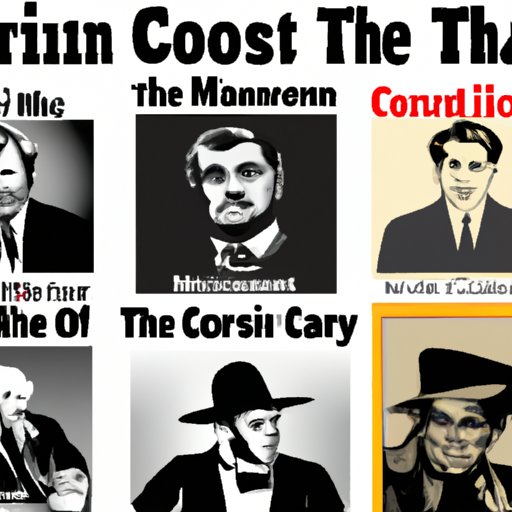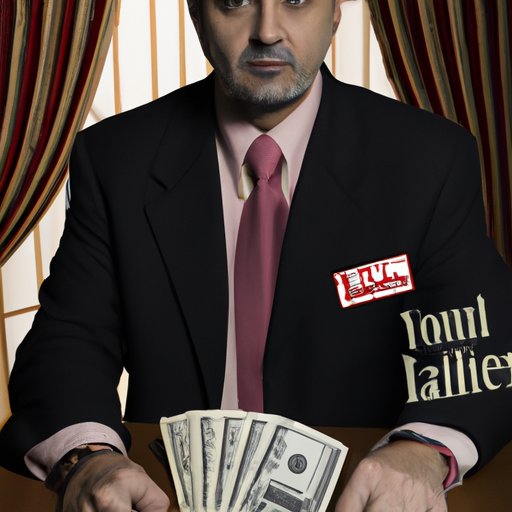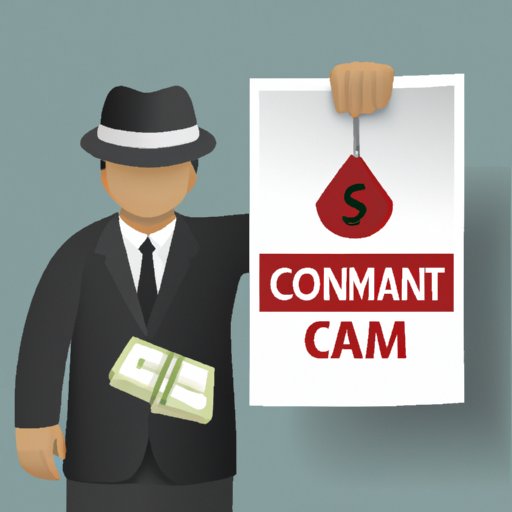Introduction
A con artist is someone who engages in fraudulent activity to deceive or cheat people out of their money or possessions. The term “con artist” is derived from the word “confidence”, as con artists often try to gain the trust of their victims before taking advantage of them. They are adept at manipulating their victims into believing their lies and schemes.
Con artists come in many shapes and sizes, but all have one thing in common: they use deception and manipulation to defraud unsuspecting victims. Con artists may be individuals or groups, operating on their own or as part of an organized crime ring. Regardless of their methods, they all rely on convincing their victims that they can provide them with something of value in exchange for money or other valuables.

Definition of a Con Artist
According to the Oxford English Dictionary, a con artist is “a person who obtains money or other benefits by deceitful pretenses or trickery.” In other words, a con artist is someone who uses deception and manipulation to take advantage of others. Con artists typically target vulnerable people, such as elderly individuals, immigrants, and those with limited financial resources.
Con artists are often very persuasive and can make even the most skeptical person believe their story. They may use charm, charisma, and flattery to win over their victims. They may also use false promises and empty guarantees to convince their victims to hand over their money or possessions.
Overview of the Common Types of Cons Used by Con Artists
Con artists use various types of cons to defraud their victims. Some of the most common types of cons include pyramid schemes, investment scams, romance scams, identity theft, charity scams, and advance fee fraud.
Pyramid schemes involve recruiting members to join an organization and then requiring them to pay a fee in order to receive a commission. Investment scams involve convincing victims to invest in bogus stocks, bonds, or other investments. Romance scams involve creating false relationships with victims and then asking them for money. Identity theft involves stealing personal information from victims in order to access their bank accounts or credit cards. Charity scams involve soliciting donations for fake charities. Advance fee fraud involves asking victims to pay an upfront fee in order to receive a larger sum of money later.
How to Spot a Con Artist
Spotting a con artist can be difficult, as they are often skilled at disguising their true intentions. However, there are some warning signs that can help you identify a possible con artist.
The first warning sign is if the person is pressuring you to make a decision quickly. Con artists will often try to rush you into making a decision before you have time to think it through.
Another warning sign is if the person is asking for large sums of money up front. Legitimate businesses typically do not require large sums of money up front.
Finally, if the person is offering something too good to be true, it probably is. If the offer seems too good to be true, it likely is a scam.
Tips for Identifying and Avoiding Potential Scams
There are several steps you can take to protect yourself from becoming a victim of a con artist. First, do your research before making any financial commitments. Research the company or individual you are dealing with to make sure they are legitimate.
Second, trust your gut instincts. If something doesn’t feel right, walk away.
Third, be wary of unsolicited offers. If you receive an offer out of the blue, chances are it is too good to be true.
Finally, never give out personal or financial information to anyone you don’t know or trust.

Famous Cases of Con Artists Throughout History
Throughout history, there have been numerous cases of con artists who have taken advantage of unsuspecting victims. Here are three of the most famous con artists in history:
Charles Ponzi
Charles Ponzi was an Italian immigrant living in Boston who devised a fraudulent scheme in which he promised investors a 50% return on their investment within 45 days. He used the money from new investors to pay off earlier investors, leading to huge profits for himself and his investors. However, the scheme eventually collapsed, leaving thousands of investors out of pocket.
Frank Abagnale
Frank Abagnale was a master con artist who managed to pass himself off as a pilot, doctor, lawyer, and professor. He used forged checks to fund his extravagant lifestyle, and eventually became one of the FBI’s most wanted criminals. He was eventually caught and served time in prison, but went on to become a successful consultant and author.
Bernie Madoff
Bernie Madoff was a Wall Street investor who orchestrated a massive Ponzi scheme that defrauded thousands of investors out of billions of dollars. He was eventually sentenced to 150 years in prison for his crimes.

The Legal Implications of Being a Con Artist
Con artists face serious legal consequences for their actions. In the United States, federal and state laws govern fraudulent activity. Depending on the severity of the offense, penalties can range from fines to imprisonment. For example, in the United States, a conviction for fraud can carry a sentence of up to 20 years in prison and a fine of up to $250,000.
In addition to criminal penalties, civil penalties may also be imposed on convicted con artists. These can include restitution payments to victims, court-ordered compensation, and damages for emotional distress.
Conclusion
A con artist is someone who uses deception and manipulation to defraud unsuspecting victims. Con artists use various types of cons, including pyramid schemes, investment scams, romance scams, identity theft, charity scams, and advance fee fraud. There are several warning signs that can help you identify a possible con artist, such as pressuring you to make a decision quickly, asking for large sums of money up front, and offering something too good to be true. There are also steps you can take to protect yourself from becoming a victim of a con artist, such as doing your research before making any financial commitments, trusting your gut instincts, and being wary of unsolicited offers. Finally, being a con artist carries serious legal implications, including fines and imprisonment.
(Note: Is this article not meeting your expectations? Do you have knowledge or insights to share? Unlock new opportunities and expand your reach by joining our authors team. Click Registration to join us and share your expertise with our readers.)
